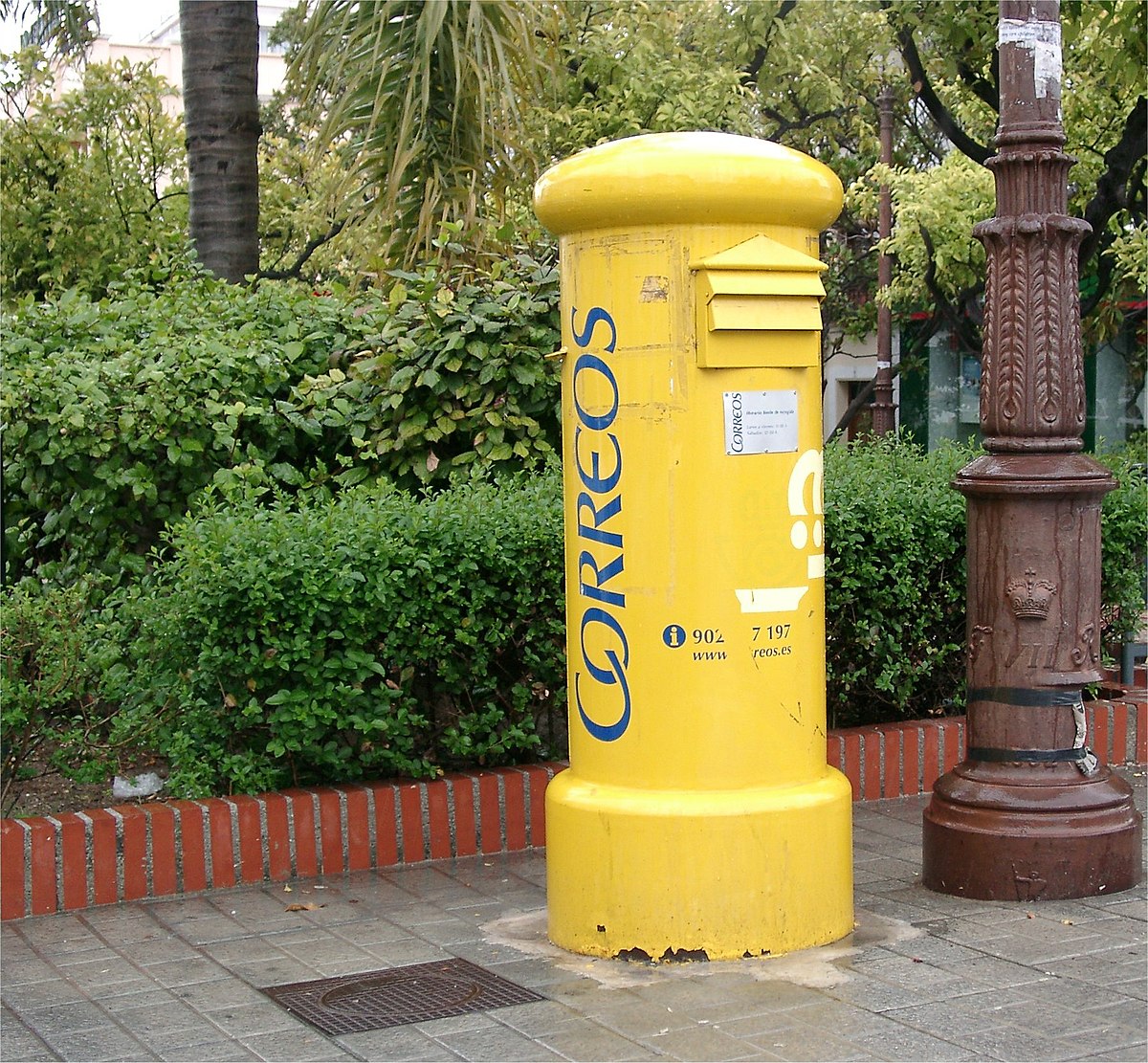In the bad old days, the village postman wasn’t much good with foreign names (although he liked to collect stamps, sometimes removing them with a certain amount of bureaucratic relish from the corner of the envelope). It was no big deal: in those times, the twenty pound notes tenderly send by my dad’s sister would be folded inside within a sheet of carbon paper to fool the early X-Ray machines in Madrid.
I’d be sent to Old Martín with instruction to collect all the foreigners’ letters – at least those of the foreigners who were sat in the village square, drinking and gossiping.
It’s not as bad as it sounds.
The correos opened in those day at the reasonable hour of 3.00pm.
Anyone who wasn’t in the square drinking naturally risked losing his twenty quid.
It’s a far cry from today. Now we don’t know each other – there’re too many of us – and the post office wouldn’t give out the mail to some spotty foreign kid anyway. Now, it’s either delivered by a person dressed in a yellow uniform driving an equally buff-coloured three-wheel motorcycle, or its placed in a tin post-box and you come along during opening hours to see what – if anything – is new.
As for the folded twenty pound notes, now the British Government lets you take abroad as much as you like: to spend freely on rounds of brandy, weekends in a Parador or buying a second hand car with no MOT and the steering wheel on the wrong end of the dashboard.
Before they took to delivering the mail, I too had a post box: un apartado. Nº 35 it was. Then they started charging a heavy sum for its rental, insisted that each person who used the PO Box would have to pay separately for the same number, and they introduced (free) house deliveries anyway.
It was an easy call, although any letters which later arrived at my Nº 35 were solemnly returned to sender, unread.
I’m sure that as the result of the Person Unknown stamp on the repatriated item, the editors of my old school magazine were convinced that I had precipitously joined the list of ‘the dearly departed’.
Which, on the bright side, saved me continuing with my modest annual subscription.
The world moved on, and someone invented emails, which took the wind out of the sails of the Spanish postal system. Then along came DHL and their parcel-totting competitors, plus those fellows who whizz through the city traffic on their bicycles with an urgent message stuffed down their Velcro pouch.
The post office was on the ropes.
So it invented in own high-speed parcel delivery system, operated as a bank for a while, started to sell books by right-wing authors (have a look next time), sent and received money abroad, sold stickers, lottery coupons and magazines and generally moved, as they say, forward.
The postage stamps were another change. Instead of a stamp which one could lick and affix, the new ones have peel-off backs. Or, and more usually, they print out an inelegant sticky strip with numbers and bar-codes, and press it onto your envelope – as often as not hiding part of the first line of the address.
So today, I went to post a letter to foreign parts and said that I wanted a stamp rather than an adhesive label, if it was all the same to them.
There was a fuss, but eventually the clerk played ball and found two stamps. The first had a peel-off back, the second did not. It has to be glued on, she said, as – not finding the glue-stick – she sellotaped it onto the envelope.
But let me leave on a positive note.
I always used to joke that when I grew up, they would put me on a postage stamp. Now, it appears, you can take along a photo to the correos and they will run you up a set of 24 street-legal stamps, with a sticky back, and bearing your smiling image.
I think I could have some fun with that.